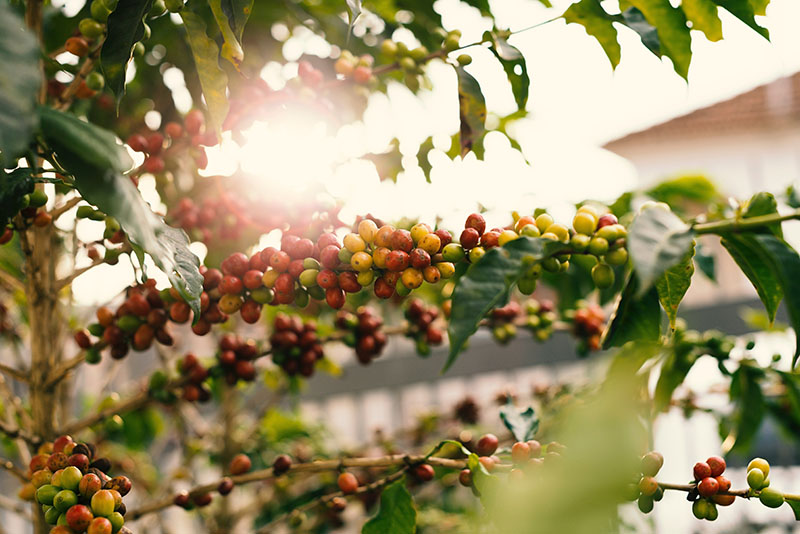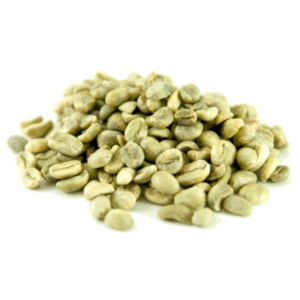Coffee: From Cherry to Green Bean
- Lisa Edwards
- Oct, 10, 2019
- Origin
- Comments Off on Coffee: From Cherry to Green Bean
Coffee is a daily ritual for most people whether they make it at home, drive through their favorite ‘Bucks, or frequent a local shop like Press Coffee. Hardly conscious while ordering on the go or brewing at home, it’s just one piece of the puzzle that makes up a person’s busy life. Many don’t put much thought into their brew besides size, flavor, or if they need room for cream. Do you know how coffee gets from its origin to your cup?
While it’s referred to as a bean, coffee actually comes from the seed inside of a cherry. The coffee plant needs rich soil, mild temperatures, frequent rain, and shade. These conditions lie between the Tropic of Cancer and Tropic of Capricorn in what is called the Coffee Belt. The majority of the world’s coffee comes from Brazil, Vietnam, Colombia, Indonesia, and Ethiopia. With over 70 countries growing coffee, Brazil contributes more than 30% of the world’s production.
There is somewhere between 25 and 100 species of coffee plants but just two main species that are used in the commercial coffee industry. Arabica descends from the original coffee trees of Ethiopia and makes up about 70% of the world’s coffee. Resulting in a fine, mild, and aromatic coffee, Arabica makes up most specialty coffee and comes at a higher price. It must be grown at higher altitudes within 59-75 degrees Fahrenheit and requires more attention since it’s prone to disease.
Primarily used in blends and instant coffee, Robusta contributes to 30% of the world market. While it has a distinct and bitter taste, it has about 50% more caffeine than Arabica and is cheaper to produce. It comes from a hearty plant that stands up better to disease and grows in warmer climates.

The journey from the coffee tree to your coffee cup is a laborious one. The cherry is harvested when it is bright red and is either strip picked, meaning all the cherries removed by hand or machine, or selectively picked where just the ripe ones are handpicked. The latter method costs more but results in a finer roast. An experienced picker averages 100-200 pounds of coffee cherries a day which will yield about 20-40 pounds of beans. Each cherry typically contains two beans at its core encased in parchment, surrounded by mucilage, pulp, and outer skin. It must be processed immediately to avoid spoilage.
The traditional way for processing the cherry, and used by many countries where the water supply is low, is to spread them out to dry in the sun. Called dry-processed coffee, the cherries are raked multiple times a day and covered at night for up to two weeks until the moisture content is reduced to 11%. After this, they are put through a de-pulping machine to strip the fruit away.
Wet processed or washed coffee gets the skin and pulp removed first before sitting in fermentation tanks for 12-48 hours. During this time, naturally occurring enzymes dissolve the layer of mucilage before the beans are removed, rinsed, and laid out to dry. They can be set out on raised beds or patios to be sun-dried or machine-dried until they reach 11% moisture content.

After processing, the parchment is removed before the beans are graded, sorted and bagged for shipment. Defective beans are removed by hand or machinery as well as any rocks or debris that may get mixed in while drying. Grading the bean takes into consideration size, density, the altitude it was grown at, and how it was processed. By this point, it’s referred to as green coffee and is ready to be shipped. This is only about halfway through its journey since the beans still need to be roasted, ground, and brewed before it hits your lips.
The USDA predicts that world coffee production for 2019/2020 will be about 169.1 million bags (60 kg) with the price dropping to under $1 per pound, the lowest since 2006. Taking into consideration how much work it takes to grow and process coffee, that price seems like a slap in the face to coffee farmers. The drop comes from an oversaturated market and Brazil’s unstable economy.
To break even on the cost of production, farmers need about $1.20 per pound which means the market price for coffee has the farmers operating at a loss. Fairtrade coffee ensures a minimum price of $1.40 ($1.70 for organic) but there are companies such as Kickapoo who set their prices higher than that. As we previously highlighted, our Viroqua friends are currently paying $2.80 per pound.
The next time you’re enjoying your morning brew, keep in mind all the hard work that went into making that cup. Consider ways you can help ensure a fair wage for farmers by purchasing fairly traded coffee or donating to programs that support coffee growers.
Read about what happens next once the beans are exported.

Pressing Newsletter
Send a Digital Gift Card!
Social
Find us online:
Facebook
Instagram:
@PressCoffee_ic
@PupsofPress
TikTok
Yelp
Order through the Joe Coffee app!
FOMO?
FAQ?
Pressing Newsletter
Social
Find us online:
Facebook
Instagram:
@PressCoffee_ic
@PupsofPress
TikTok
Yelp
Order through the Joe Coffee app!

